

Nutrition and fasting in Somali Culture. An estimated 12,000 to 15,000 Somali’s living in the Seattle area reside in apartments in the Rainier Valley, in Kent, Tukwila and in SeaTac.
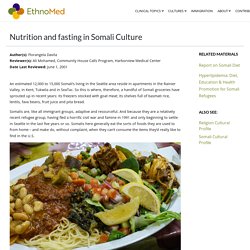
So this is where, therefore, a handful of Somali groceries have sprouted up in recent years: its freezers stocked with goat meat; its shelves full of basmati rice, lentils, fava beans, fruit juice and pita bread. Somalis are, like all immigrant groups, adaptive and resourceful. And because they are a relatively recent refugee group, having fled a horrific civil war and famine in 1991 and only beginning to settle in Seattle in the last five years or so. Somalis here generally eat the sorts of foods they are used to from home – and make do, without complaint, when they can’t consume the items they’d really like to find in the U.S.
Somalia — The World Factbook. PDF Major urban areas - population: 2.282 million MOGADISHU (capital), 989,000 Hargeysa (2020) Sex ratio: at birth: 1.03 male(s)/female 0-14 years: 1 male(s)/female 15-24 years: 1.01 male(s)/female 25-54 years: 1.07 male(s)/female 55-64 years: 1.05 male(s)/female 65 years and over: 0.66 male(s)/female total population: 1.02 male(s)/female (2020 est.)
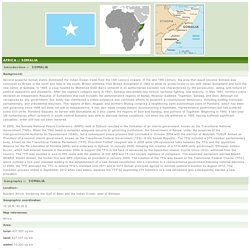
Maternal mortality rate: 829 deaths/100,000 live births (2017 est.) Country comparison to the world: 6 Infant mortality rate: total: 89.5 deaths/1,000 live births male: 97.8 deaths/1,000 live births female: 81 deaths/1,000 live births (2020 est.) Country comparison to the world: 2 Life expectancy at birth: total population: 54 years male: 51.8 years female: 56.2 years (2020 est.) Country comparison to the world: 225 Total fertility rate: 5.51 children born/woman (2020 est.) Folktales - Inuit Class Website. Somali Mythology and Folktales Myth: a traditional story, especially one which explains the early history, a cultural belief, or cultural practice of a group of people.
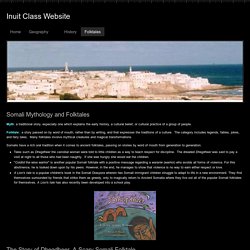
2016 Report on International Religious Freedom - Somalia. Executive Summary The provisional federal constitution (PFC) provides for the right of individuals to practice their religion, makes Islam the state religion, prohibits the propagation of any religion other than Islam, and stipulates all laws must comply with the general principles of sharia.
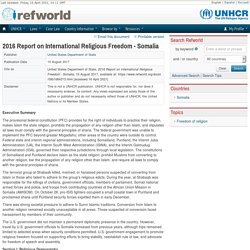
The federal government was unable to implement the PFC beyond greater Mogadishu; other areas of the country were outside its control. Federal state and interim regional administrations, including Somaliland, Puntland, the Interim Juba Administration (IJA), the Interim South West Administration (ISWA), and the Interim Galmudug Administration (IGA), governed their respective jurisdictions through local legislation. The constitutions of Somaliland and Puntland declare Islam as the state religion, prohibit Muslims from converting to another religion, bar the propagation of any religion other than Islam, and require all laws to comply with the general principles of sharia.
Section I. Section II. The Languages spoken in Somalia. Somali is the official and national language of Somalia.

It is spoken by more than 8 million people throughout the country, especially in the urban areas. Climate - Somalia - average, annual, temperature. Ancient Egyptian Mythology. Egyptian mythology was the belief structure and underlying form of ancient Egyptian culture from at least c. 4000 BCE (as evidenced by burial practices and tomb paintings) to 30 BCE with the death of Cleopatra VII, the last ruler of the Ptolemaic Dynasty of Egypt.
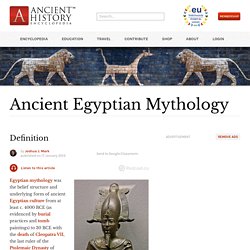
Every aspect of life in ancient Egypt was informed by the stories which related the creation of the world and the sustaining of that world by the gods. Egyptian religion influenced other cultures through transmission via trade and became especially widespread after the opening of the Silk Road in 130 BCE as the Egyptian port city of Alexandria was an important commercial center. Egypt population. Legal Research Guide: Egypt. Back to Foreign and International Law Introduction Historic Background.
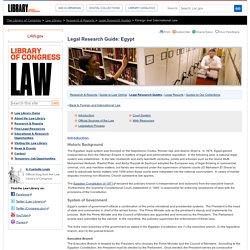
A Complete Guide to the Religions of Egypt. © Noe Garin / Culture Trip Add travel ideas to a Plan and see them on a map Got it!
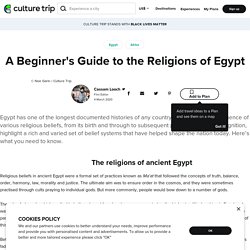
What Language Is Spoken In Egypt? If you didn’t have the faintest clue as to what language is spoken in Egypt and you had to guess off the top of your head, you might be inclined to say “Arabic,” and you would be mostly correct. However, as with every other nation-state in existence, Egypt is composed of a complex fabric of demographics and immigrant influences. Additionally, it serves as a living reminder that spoken languages can vary drastically from their written standard versions, with the spoken languages more accurately reflecting regional differences and the written standard serving as a sort of official lingua franca that unifies the whole.
Modern Standard Arabic Egypt’s official language is Modern Standard Arabic, which is used in most written documents and schools. However, Modern Standard Arabic mostly describes the literary form of Arabic, which is actually a macrolanguage composed of multiple distinct vernacular dialects. Many Shades Of Spoken Arabic Other Languages. The Climate Of Egypt. Throughout Egypt, days are commonly warm or hot, and nights are cool.
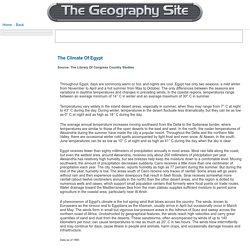
Egypt has only two seasons: a mild winter from November to April and a hot summer from May to October. Geographic Regions of Egypt. Japanese mythology. Japanese mythology, body of stories compiled from oral traditions concerning the legends, gods, ceremonies, customs, practices, and historical accounts of the Japanese people. Most of the surviving Japanese myths are recorded in the Kojiki (compiled 712; “Records of Ancient Matters”) and the Nihon shoki (compiled in 720; “Chronicles of Japan”). These works tell of the origin of the ruling class and were apparently aimed at strengthening its authority.
Therefore, they are not pure myths but have much political colouring. Japan Demographics 2020 (Population, Age, Sex, Trends) - Worldometer. Population of Japan (2020) View live population, charts & trends: Population of Japan Japan Population Fertility in Japan A Total Fertility Rate (TFR) of 2.1 represents the Replacement-Level Fertility: the average number of children per woman needed for each generation to exactly replace itself without needing international immigration.

A value below 2.1 will cause the native population to decline pregnant_woman Total Fertiliy Rate (TFR) Religion in Japan. Shinto and Buddhism are Japan's two major religions. Shinto is as old as the Japanese culture, while Buddhism was imported from the mainland in the 6th century. Since then, the two religions have been co-existing relatively harmoniously and have even complemented each other to a certain degree.
Most Japanese consider themselves Buddhist, Shintoist or both. Religion does not play a big role in the everyday life of most Japanese people today. The average person typically follows the religious rituals at ceremonies like birth, weddings and funerals, may visit a shrine or temple on New Year and participates at local festivals (matsuri), most of which have a religious background. Religions and Philosophies Other Religion Related Pages. What Languages Are Spoken In Japan? - WorldAtlas. People in Japan speak languages from two main language families: the Japonic languages and the Ainu.
The Ryukyuan languages are part of the Japonic family even though they are unintelligible to those who speak standard Japanese. There are many dialects spoken in Japan and some are considered by UNESCO to be endangered due to the introduction of standard Japanese nationwide in schools. Where does language come from? Babies make grunts and gurgles and babble incomprehensibly until one day, they suddenly come out with a few real words. Japan climate: average weather, temperature, precipitation, best time. Index Introduction. What Continent Is Japan In? - WorldAtlas. Japan is a volcanic island nation located in East Asia.
Aztec Mythology - Myth Encyclopedia - god, story, legend, names, ancient, animal, snake, war, world, creation. Aztec, New Mexico Population & Demographics. Aztec, NM Demographics Follow Key findings. Unearthing the secrets of the Aztecs. Prominent Mexican archaeologist Eduardo Matos Moctezuma on April 10 will deliver the first lecture on campus in the series that bears his name and honors his contributions to archaeology. Aztec Empire for Kids: Government and Empire. Uto-Aztecan language. Effect of Geography on the Maya, Aztec & Inca Civilizations - Video & Lesson Transcript.